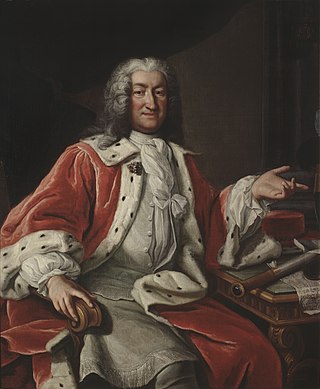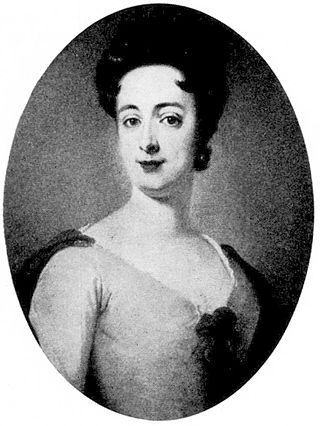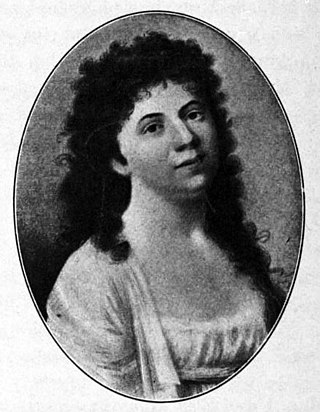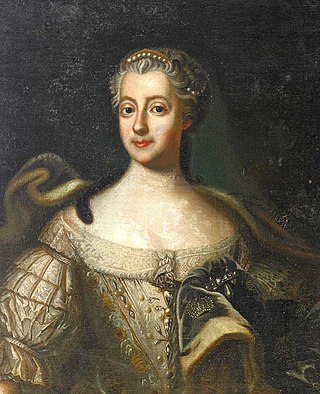| Years in Sweden: | 1716 1717 1718 1719 1720 1721 1722 |
| Centuries: | 17th century · 18th century · 19th century |
| Decades: | 1680s 1690s 1700s 1710s 1720s 1730s 1740s |
| Years: | 1716 1717 1718 1719 1720 1721 1722 |


Events from the year 1719 in Sweden
| Years in Sweden: | 1716 1717 1718 1719 1720 1721 1722 |
| Centuries: | 17th century · 18th century · 19th century |
| Decades: | 1680s 1690s 1700s 1710s 1720s 1730s 1740s |
| Years: | 1716 1717 1718 1719 1720 1721 1722 |


Events from the year 1719 in Sweden

Ulrika Eleonora or Ulrica Eleanor, known as Ulrika Eleonora the Younger, was Queen of Sweden, reigning in her own right from 5 December 1718 until her abdication on 29 February 1720 in favour of her husband King Frederick, and then as his consort until her death.

The monarchy of Sweden is centered on the monarchical head of state of Sweden, by law a constitutional and hereditary monarchy and with a parliamentary system. There have been kings in what now is the Kingdom of Sweden for more than a millennium. Originally an elective monarchy, it became a hereditary monarchy in the 16th century during the reign of Gustav Vasa, though virtually all monarchs before that belonged to a limited and small number of families which are considered to be the royal dynasties of Sweden.

Riksdag of the Estates was the name used for the Estates of Sweden when they were assembled. Until its dissolution in 1866, the institution was the highest authority in Sweden next to the King. It was a Diet made up of the Four Estates, which historically were the lines of division in Swedish society:

The Council of the Realm, or simply The Council, was a cabinet of medieval origin, consisting of magnates which advised, and at times co-ruled with, the King of Sweden.

Count Arvid Bernhard Horn af Ekebyholm was a Swedish general, diplomat and politician, a member of the noble Horn family. He served twice as President of the Privy Council Chancellery and was one of the leading figures of the Swedish Age of Liberty.

In Swedish and Finnish history, the Age of Liberty was a period that saw parliamentary governance, increasing civil rights, and the decline of the Swedish Empire that began with Charles XII's death in 1718 and ended with Gustav III's self-coup in 1772. This shift of power from the monarch to parliament was a direct effect of the Great Northern War.

Louisa Ulrika of Prussia was Queen of Sweden from 1751 to 1771 as the wife of King Adolf Frederick. She was queen mother during the reign of King Gustav III.

Charles Frederick, Duke of Schleswig-Holstein-Gottorp was a Prince of Sweden and Duke of Schleswig-Holstein-Gottorp and an important member of European royalty. His dynasty, the Dukes of Schleswig-Holstein-Gottorp, were a cadet branch of the ancient House of Oldenburg, which at that time was ruling Denmark-Norway. His mother was a sister of Charles XII of Sweden. Charles Frederick married a daughter of Peter the Great and became the father of the future Peter III of Russia. As such, he is the progenitor of the Russian imperial house of Holstein-Gottorp-Romanov and the patrilineal ancestor of all Russian emperors starting with Peter III, except for Catherine II.
Henrika Juliana von Liewen was a Swedish noble, socialite and lady-in-waiting, politically active on behalf of the Hats (party) during the Age of liberty.

Emerentia von Düben also called Menza, was a Swedish lady-in-waiting, the favourite of Ulrika Eleonora, Queen of Sweden. She was known for her influence over Ulrika Eleonora.

Ulrika Eleonora Säfström was a Swedish stage actress, described as a great dramatic star of Stockholm in her day. She was used for heroine parts and was also popular in operettas.

Ulrika "Ulla" Eleonora von Höpken, later von Wright, née von Fersen, was a Swedish countess and courtier. She is also famous in history as one of "the three graces" of the Gustavian age; three ladies-in-waiting immortalized in the poem Gracernas döpelse by Johan Henric Kellgren. She was a leading socialite and trendsetter in contemporary Sweden, and one of the best known personalities of the Gustavian age.

The Russian Pillage, is the name for the action of the Imperial Russian Fleet toward the Swedish civilian population along the Swedish east coast, as well as expeditions and the raids of single unit in the inland, during the finishing years of the Great Northern War in 1719–1721. The purpose was to pillage, sack, and burn to force the Swedish regime to concessions during the peace negotiations on Åland. The Swedish representative, Georg Heinrich von Görtz, was at the time stalling the negotiations in hope of military support from Great Britain. Peter the Great, on the other hand, wished for a swift end to the war, which would make it possible for him to focus on inner reform.

Events from the year 1738 in Sweden

Events from the year 1720 in Sweden

Events from the year 1718 in Sweden

The Coup of 1756 was an attempted coup d'état planned by Queen Louisa Ulrika of Sweden to abolish the rule of the Riksdag of the Estates and reinstate absolute monarchy in Sweden. The attempted coup was exposed and subdued in 1756 shortly before it was due to be put in action. It caused a rift between the royal house and the parliament.

The 1719 Instrument of Government adopted on 21 February 1719 by the Riksdag of the Estates, was the constitution of the Kingdom of Sweden from 1719 to 1720. Although only in force for a few months, it has great significance in Swedish history, as its promulgation marked the end of the country's first period of absolutism (1680-1719) and the beginning of the period of constitutional monarchy and parliamentary government traditionally known as the Age of Liberty.

The economic history of Sweden's Age of Liberty examine the changes to the Swedish economy between 1718 and 1772. The economic factors that contributed to the fall of the Swedish Empire and the shift away from absolutism, as well as the legacy of the era in terms of the nation's economic history after 1772 are also noted.

The 1720 Instrument of Government adopted on 2 May 1720 by the Riksdag of the Estates, was the constitution of the Kingdom of Sweden from 1720 to 1772, and was thus in force for almost the entirety of the period of constitutional monarchy known as the Age of Liberty, having replaced the largely identical Instrument of Government (1719).